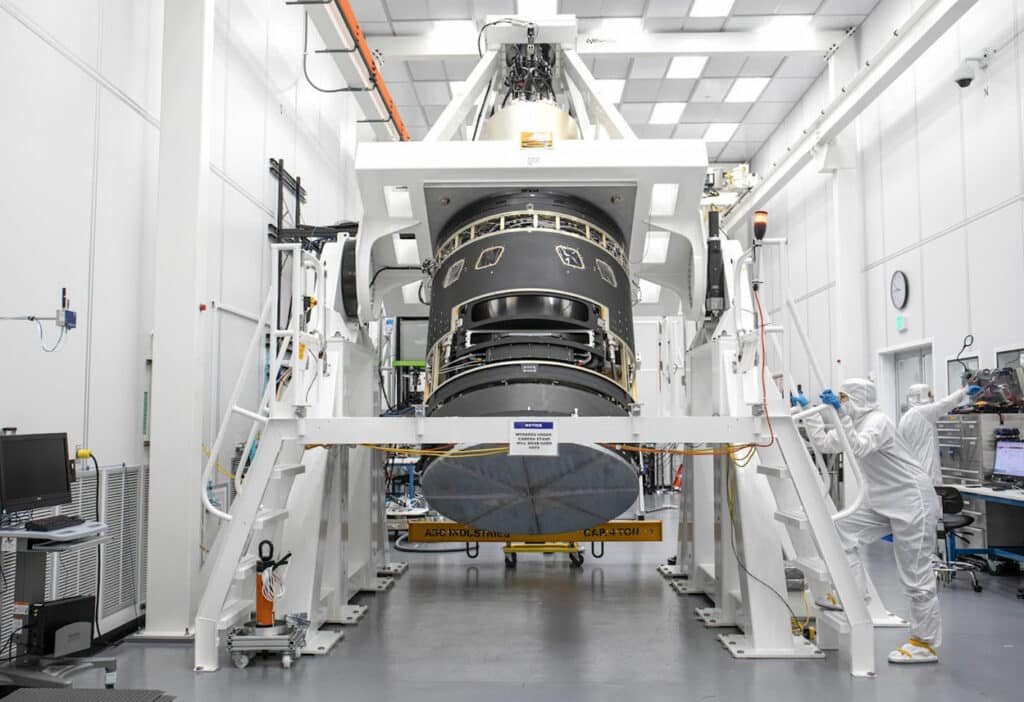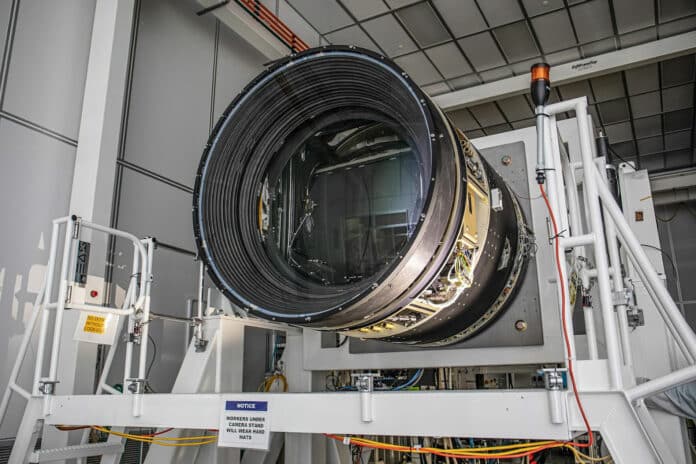The Legacy Survey of Space and Time (LSST) camera is being built by researchers at Stanford University’s SLAC National Accelerator Laboratory with the goal of capturing the night sky in unprecedented detail.
Although the camera isn’t fully complete yet, all of its mechanical components are now together for the first time in one photogenic structure. The team facilitated media visits to the clean room while the camera was positioned so that visitors could see its impressive focal plane (which contains 189 sensors known as CCDs) through the camera’s lenses.
Standing at 1.65-meter tall, LSST Camera is the largest digital camera ever constructed. The camera will be installed at the Vera C. Rubin Observatory at the summit of Cerro Pachón in Chile by the end of 2024.

The 3200-megapixel camera – powerful enough to spot a golf ball from 15 miles away – is around the size of a small SUV, while its lens alone has a diameter of over five feet. Once finished, it will take digital images of the entire visible southern sky every few nights from the Rubin Observatory.
Its 189 sensors take in light emanating from stars and other objects and convert it to electrical signals that can be turned into digital images. The size of each sensor is around 16 millimeters, and each packs more pixels than a single iPhone 13. The camera has 3.2 gigapixels in total and will capture images with high enough resolution to see a particle of dust on the moon. With a diameter of 1.57 meters, its largest lens is the largest lens of its kind that has ever been made.
The digital camera includes a filter-changing mechanism and shutter. It is positioned in the middle of the telescope, where the cross-sectional area is constrained by optical vignetting (edge darkening), and heat dissipation must be controlled to limit lens-deforming thermal gradients in the incoming light. The LSST camera will produce data of extremely high quality with minimum downtime and maintenance.
The team at SLAC is testing the camera shutter and the filter exchange system, two dynamic components that were also recently installed. The LSST camera will undergo one final modification – the installation of an updated refrigeration system – before the end of the year. At that point, the camera will be complete and ready for final testing before it ships to Chile in May of 2023.
